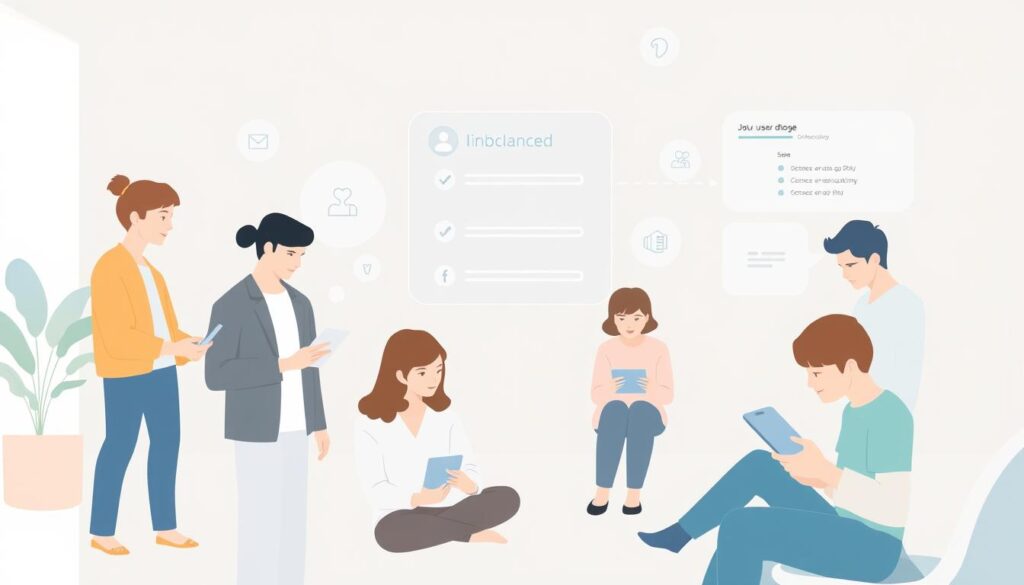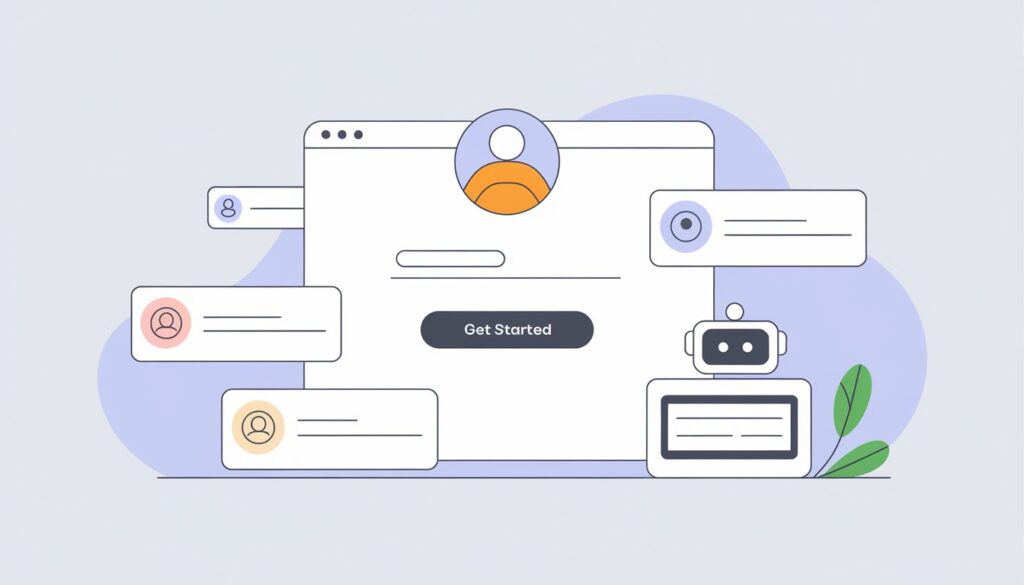Gone are the days when onboarding required endless emails and hand-holding from support teams. Self-service onboarding is revolutionizing how companies introduce new users to their products — simplifying setup, reducing friction, and boosting engagement from day one.
Why is this approach gaining so much traction? Because today’s users prefer autonomy — 81% say they’d rather solve problems on their own than contact support. Self-service onboarding addresses this demand directly by offering in-app guidance, interactive tutorials, and automated workflows that enable users to start effortlessly.
But it’s not just about convenience. Companies that embrace self-service onboarding see real results. Kommunicate.io experienced a 41% increase in feature engagement and a nearly 3% rise in revenue after implementing self-serve onboarding. And at SaaStock Remote 2020, industry leaders named it a key strategy for driving product success.
So, how can your company harness the power of self-service onboarding to improve user experience and accelerate growth? Let’s break down the benefits, best practices, and real-world success stories so you can implement a winning strategy.

What Is Self-Service Onboarding?
Self-service onboarding lets users learn and use a product on their own. It’s perfect for today’s world where people like to explore at their own speed. Companies can make it easy with no-code tools and guided steps.
This approach has big advantages. It helps SaaS companies onboard many users at once, saving money and making users happier. Good user flows also mean more people stick with the product. For example, GrowthMentor cut support tickets from 25-30 to just 1-2 a day with self-service onboarding.
Self-service onboarding is a mix of helping users right away and supporting them when needed. It uses interactive guides, knowledge bases, and games to keep users interested. This way, users find value fast, leading to strong customer ties and successful product use.
Key Features of Effective Self-Service Onboarding
Frictionless enrollment is key in self-service onboarding. A user-friendly customer portal makes setup easy. This boosts user happiness and cuts costs. Gartner says self-service costs just $0.10, while agent help costs $8.01.
Being available 24/7 is a must. Users can get help anytime, anywhere. This cuts down wait times and lets users help themselves. Self-service onboarding should also offer in-product help, like guided tours for new features.
Customizable user paths are vital. They let users focus on what matters most to them. This personal touch is important, as 57% of consumers might leave after a bad experience. Tailoring the experience can boost adoption and reduce churn.
Adding chatbots to the customer portal can make support smoother. These automated helpers can answer simple questions, saving time for more complex issues. By analyzing user data, businesses can improve the user flow and overall experience.

Steps To Implement Self-Service Onboarding
Successfully implementing self-service onboarding requires a strategic approach that prioritizes user experience and efficiency. Here are the key steps to creating a seamless onboarding journey:
1. Understand User Needs
Start by analyzing customer behavior and identifying common pain points. Conduct user research, gather feedback, and track user interactions to pinpoint friction areas. Use these insights to design an onboarding experience that feels intuitive, addressing potential obstacles before they arise.
2. Automate Account Setup
Reduce manual effort and streamline sign-ups with low-code tools, smart forms, and automated workflows. Enabling single sign-on (SSO) and pre-filled fields can further simplify the process, minimizing errors and reducing drop-off rates. The goal is to get users up and running as quickly as possible.
3. Enhance User Enablement
Provide users with the resources they need to succeed. Interactive product walkthroughs, in-app tooltips, video tutorials, and a well-structured knowledge base ensure that users can navigate the platform independently. A chatbot or FAQ section can offer additional real-time support.
4. Measure & Optimize
Track activation rates, feature adoption, and customer support requests to identify areas for improvement. Regularly refine your onboarding process using A/B testing and analytics to maximize engagement and conversion rates. A data-driven approach ensures continuous optimization and long-term success.
Best Practices for Self-Service Onboarding
Effective self-service onboarding is key for keeping customers happy and loyal. Studies show that 86% of people are more likely to stay with a company that invests in good onboarding. Start by making your sign-up forms simple. Forms with just email, name, and company tend to work best.
Use guided workflows to help users through tough tasks. This can increase free-to-paid conversions by up to 300%. Videos are popular for learning new products, with 65% of users preferring them. Creating effective user flows is vital for a smooth onboarding.
Use no-code tools to customize onboarding easily. This lets you make quick changes based on user feedback. Always check how users are doing to find ways to improve. By following these tips, you can make onboarding great, which boosts product use and keeps customers coming back.

Tools and Technologies for Self-Service Onboarding
Self-service onboarding tools make setting up users easier and increase product use. A user-friendly customer portal is essential. If users face problems during onboarding, 77% won’t come back. So, picking the right tools is very important.
Tools like Userpilot, Appcues, and Intercom are popular. They have features for interactive tours, in-app messages, and analytics. They also offer easy integration with other systems, saving time and improving user experience.
Startups can use Userlist and Customer.io for affordable email automation. Chameleon and Helppier are great for tooltips and step-by-step guides. For a full solution, Pendo is a good choice with advanced analytics and support for many platforms.
When choosing tools, look for native integration. This makes processes smoother and cuts costs. Remember, most customers expect a lot from onboarding. Meeting these expectations can greatly help your product’s success.
Measuring the Success of Self-Service Onboarding
Tracking the right metrics is key to optimizing self-service onboarding. Companies that focus on measuring success see significant improvements. For example, a digital communication platform boosted activation rates by 124% through data-driven onboarding. Yotpo, an e-commerce marketing platform, increased retention by 50% by refining their welcome page metrics.
Key performance indicators for self-service onboarding include retention rate, engagement rate, and feature adoption rate. Time to value (TTV) is crucial, showing how quickly users benefit from the product. The activation rate reveals the percentage of users reaching key milestones, while the number of support tickets indicates potential onboarding hurdles.
Automated provisioning streamlines the process, but you must measure its effectiveness. Track customer effort by analyzing how many attempts users make to find information. Calculate ROI by comparing costs before and after implementing self-service onboarding. Monitor abandon and escalation rates to identify usability issues. Engagement metrics and the rate at which customers resolve queries independently reflect user enablement success.
Common Challenges in Self-Service Onboarding
Self-service onboarding has many benefits, but it comes with its own set of challenges. Many businesses struggle with creating guided workflows for new users. One big issue is making an interface that works for everyone.
Despite 53% of companies thinking they do well in self-service, only 15% of customers agree. This shows a big gap between what companies think they offer and what customers actually get.
Another problem is finding the right balance between too much and too little information. Giving users too much can confuse them and make them leave. In fact, 27% of customers say they get frustrated because they don’t get the help they need.
To solve this, businesses need to make their content clear and easy to follow. This will help guide users smoothly through the onboarding process.
Security is another big challenge in self-service platforms. As more companies use low-code solutions, keeping user data safe is key. Regular checks and mapping out the user journey can help spot and fix security issues.
Keeping content up-to-date is also a constant battle. With new tech coming out fast, businesses must keep their onboarding materials current. This ensures that users get the right info and can use the product to its fullest.
Case Studies of Successful Self-Service Onboarding
Many companies have seen big wins with self-service onboarding. The Room, a Talent-as-a-Service platform, saw a 75% jump in CV uploads in just two weeks. This was thanks to a smooth sign-up process.
Osano, a data privacy platform, cut live chat requests by 25%. They did this by adding in-app resources and teaching users through their portal.
ClearCalcs, a structural design software, made it easier for users to find the right tool. This boosted user activation. Sked Social, a social media tool, saw conversion rates triple for those who finished their sign-up checklist.
Stripo, an email design platform, caught 32% of site visitors with a one-click demo. An amazing 5% of these visitors finished the tutorial before signing up. Kontentino, a social media tool, saw nearly a 10% increase in new user activation. They did this with an interactive guide and checklist.
These stories show how self-service onboarding can boost user engagement and business growth.
Future Trends in Self-Service Onboarding
The future of self-service onboarding is changing fast. More businesses are focusing on making sign-up easier. This means using no-code tools and automated setup. It’s all about giving users a smooth experience, just like what 90% of customers want.
AI chatbots and virtual assistants are now key in guiding users. They help make sure brands understand each customer’s needs. Personalization is also a big deal, with 89% of leaders seeing it as essential for success.
Data and predictive analytics are making onboarding more personal. This is what 73% of customers are looking for. Augmented and virtual reality are also becoming popular for immersive experiences. They help with complex products, making sure 87% of customers get a consistent experience.
Master Self-Service Onboarding & Elevate Your User Experience
The future of onboarding is here, and it’s all about efficiency, personalization, and user empowerment. A seamless self-service onboarding experience doesn’t just improve retention — it transforms how users connect with your product. By leveraging the right tools, automation, and data-driven insights, you can turn first-time users into lifelong advocates.
Want more insights on creating frictionless digital experiences? Check out Mood Joy for expert takes on UX/UI best practices. Dive into our latest articles and unlock strategies to enhance user engagement and streamline onboarding — explore more at Mood Joy.



